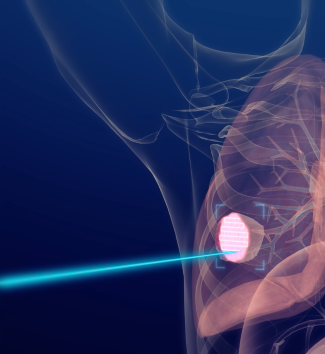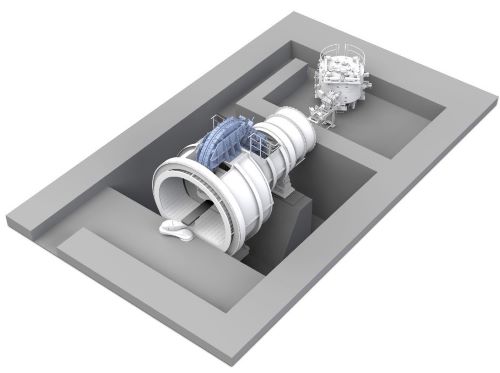Successful Development of a Next-Generation Proton Therapy System ー Enables Irradiation of Mobile Organs in a Shorter Time ー
June 22, 2022
Sumitomo Heavy Industries, Ltd. (hereinafter referred to as “SHI”, Head Office: Shinagawa-ku, Tokyo; President: Shinji Shimomura) has conducted beam testing of a next-generation proton therapy system under development at its Saijo Works (Ehime Prefecture) and confirmed achievement of the required irradiation performance. This next-generation system will shorten proton beam irradiation time, reduce building volume needed for system installation, and simplify patient positioning.


[Three key needs in proton therapy]
1. Irradiation of organs with respiratory motion
Tumors which move due to respiration account for more than 20% of cancer cases worldwide, and that percentage is increasing. (*2) In the 2022 revision of the Japan’s medical reimbursement system, the coverage of proton therapy was expanded to large hepatocellular carcinomas, intrahepatic bile duct cancer, locally advanced pancreatic cancer, and postoperative local recurrence of colon cancer (all limited to unresectable cases ). (*3) With existing proton therapy, it was challenging to accurately treat organs which move due to respiration such as the lungs, liver, and pancreas. To treat moving organs with high accuracy, it is necessary to deliver proton beams in a shorter time while reducing organ motion.
2. The large building volume required to install a proton therapy system is a barrier to its installation in a hospital.
3. Proton therapy requires high-accuracy patient positioning. This process is time consuming and limits the number of patients who can be treated per day.
[Three features of our next-generation proton therapy system]
1. A superconducting cyclotron (*4) and ultrafast scanning technology (*5) can reduce proton beam irradiation time by a factor of three. The combination of 1000 nA proton beams from the superconducting cyclotron, 0.1-second energy switching, and scanning speed of up to 100 m/s achieves short-time irradiation. Short-time irradiation is expected to complete during a single breath-hold, making it possible to treat moving organs with high accuracy.
2. The optimal system design for a single room can reduce the building volume by approximately 30%. The reduction in building volume will reduce the cost of building construction and shorten the construction period, enabling an early start of treatment.
3. A 360-degree gantry and large-field cone-beam CT (*6) make patient positioning simple and accurate. Simple patient positioning contributes to shorter treatment time.
[Beam testing]
Beam testing was conducted at the newly established Accelerator Application Center at SHI’s Saijo Works. Key irradiation performance was tested, including energy switching time, scan speed, and beam position accuracy, and the required performance was verified. Comprehensive irradiation tests simulating actual targets were conducted and verified shortening of irradiation time.
SHI will continue to develop products in the field of cancer treatment with the aim of realizing a society where people can live long and healthy lives.
(*1) This next-generation proton therapy system is an unapproved medical device.
(*2) Source: “Global Cancer Observatory – IARC”
(*3) Source: “Individual Revision Items — Ministry of Health, Labour and Welfare”
(*4) A cyclotron is a proton accelerator characterized by high intensity and a continuous beam.
(*5) Scanning irradiation is an irradiation method which minimizes damage to normal tissues and organs surrounding a tumor by scanning narrow proton beams according to the tumor shape.
(*6) Cone-beam CT is an imaging method which obtain 3D images by performing X-ray imaging while rotating a gantry.
